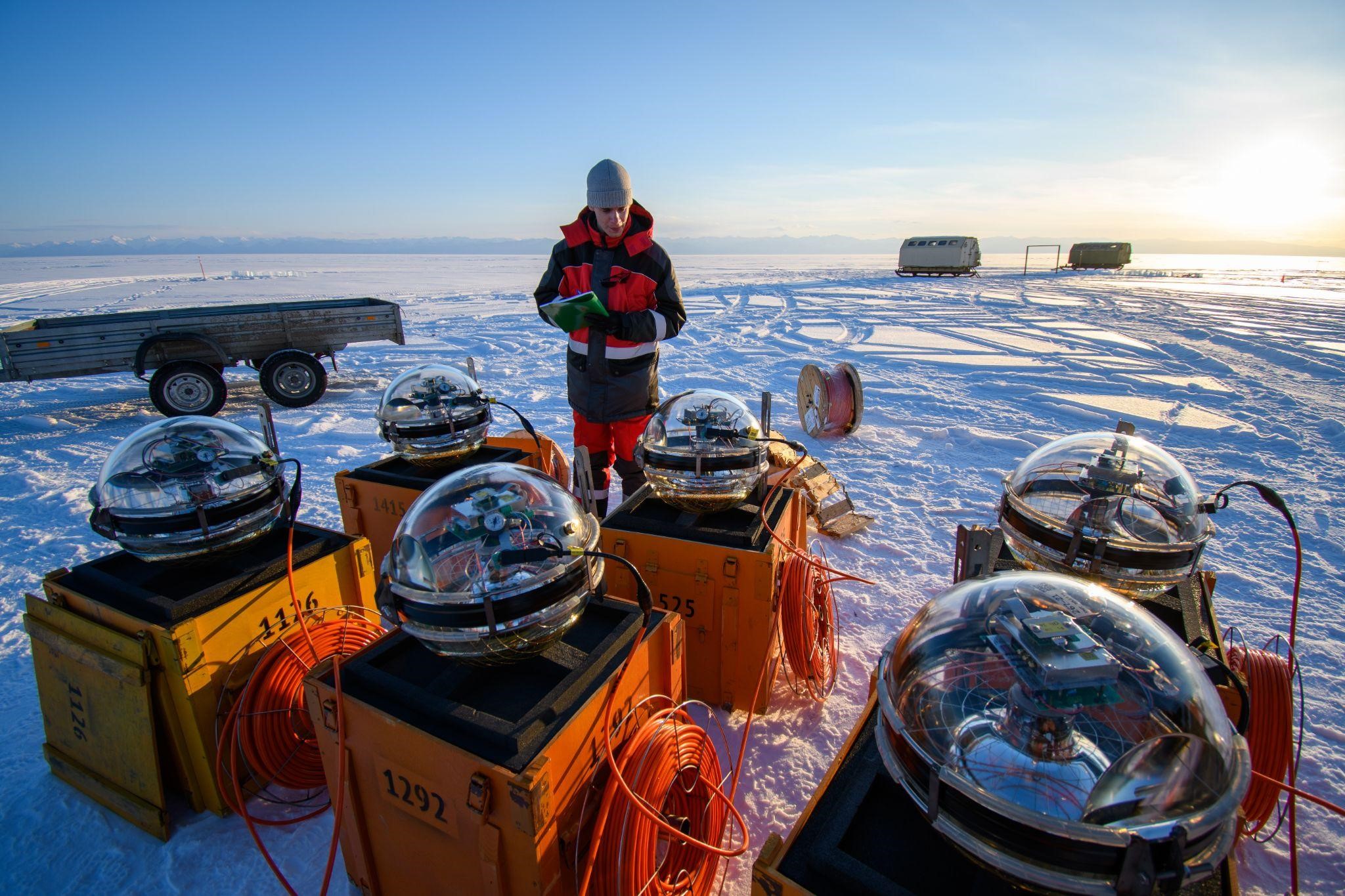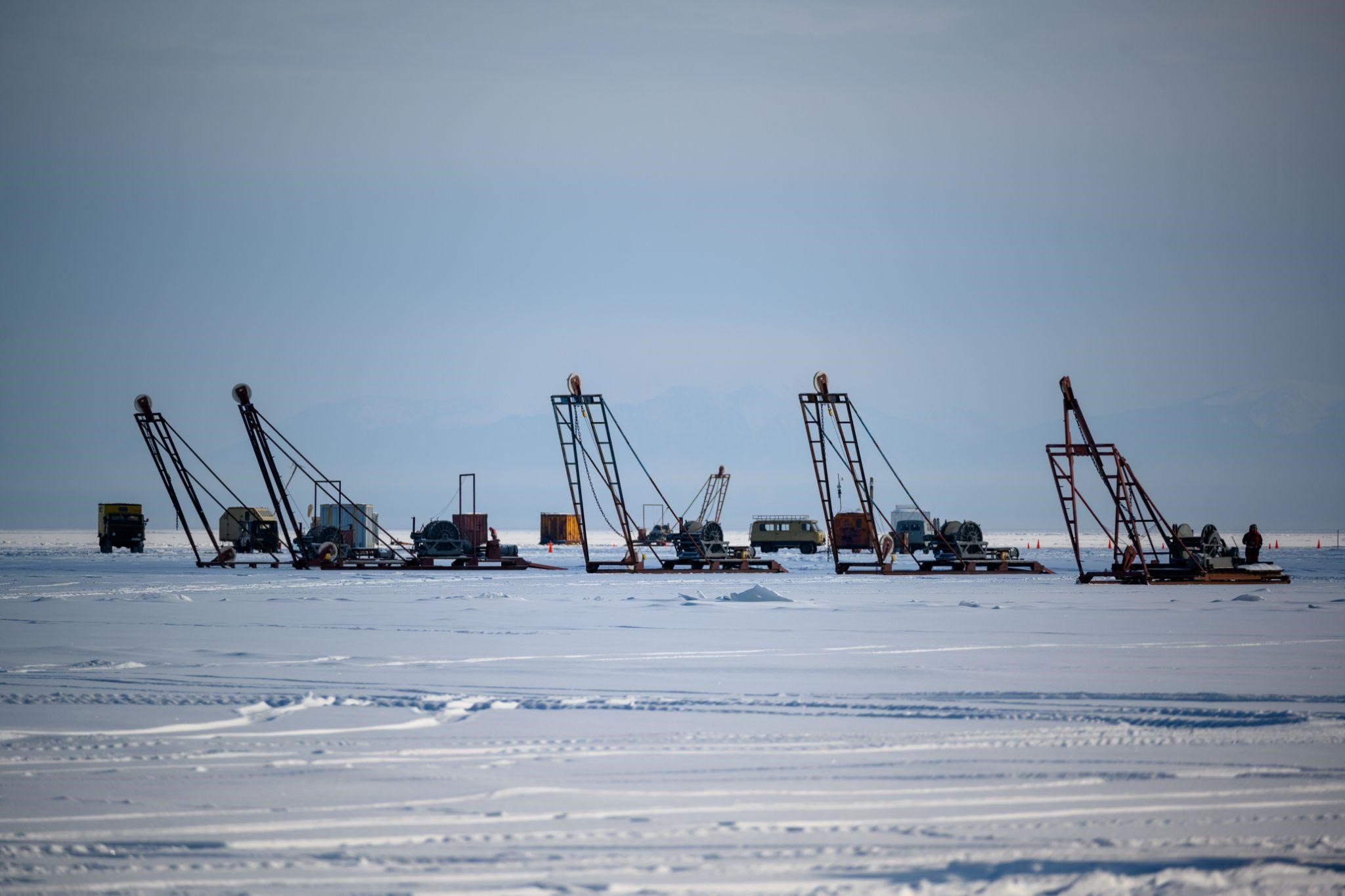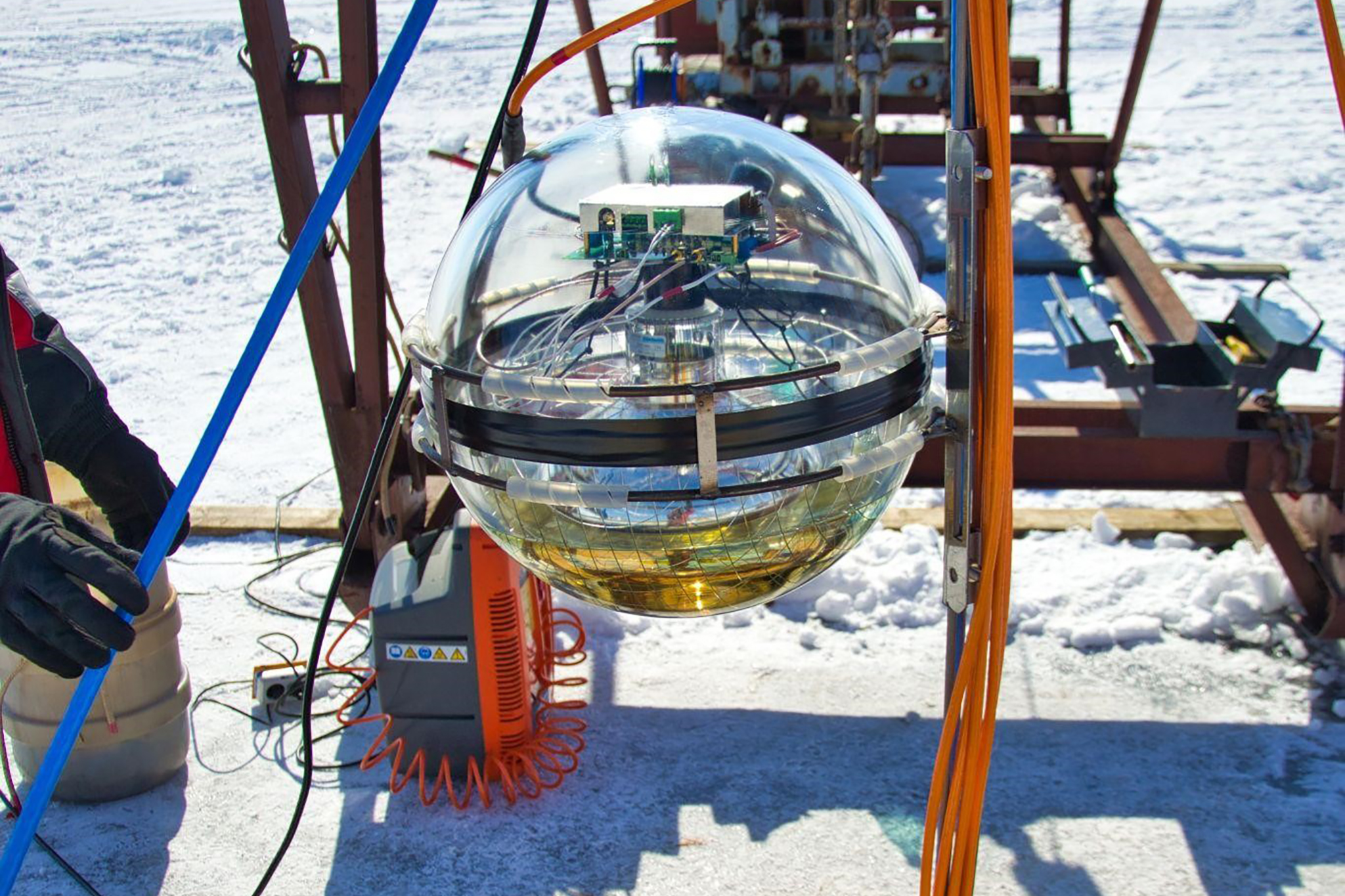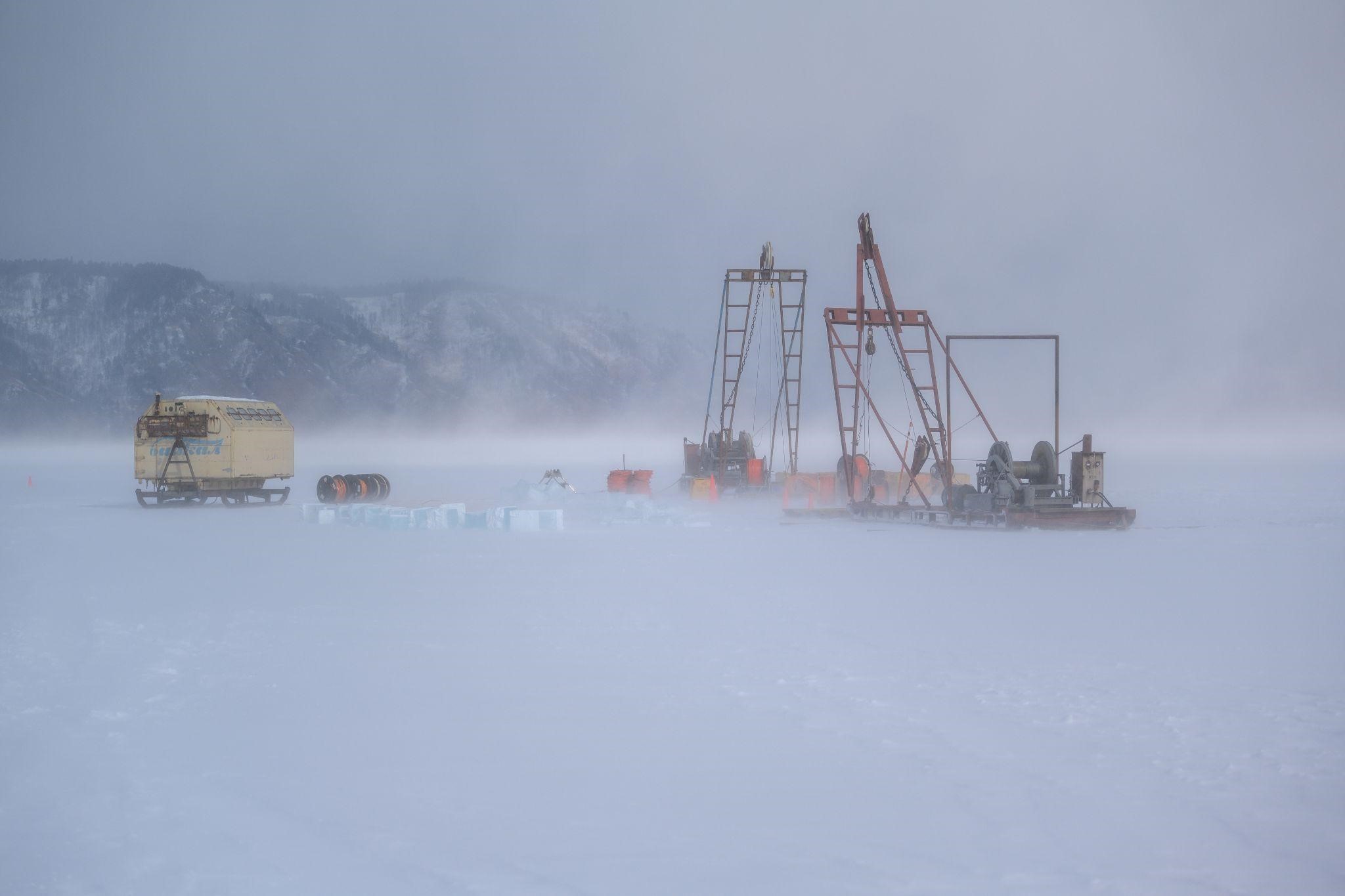Launching regular expedition to construct Baikal Neutrino Telescope
News, 16 February 2023
From 17 February 2023, the regular expedition to construct the Deep Underwater Neutrino Telescope Baikal-GVD of a cubic-kilometre volume is getting underway on Lake Baikal. During about two months, the Baikal-GVD collaboration plans to install two new clusters of optical modules, three service buoy stations with calibration lasers, to further develop the system of data transmission via optical lines inside the facility, and also to lay two bottom cable lines of cluster power supply.
“The condition of the ice sheet this year allows us to expect the expedition to be a success,” remarked Grigory Domogatsky, a corresponding member of RAS, head of the Baikal-GVD project, head of the Laboratory of High-Energy Neutrino Astrophysics of the Institute for Nuclear Research of RAS.
Neutrino telescope deployment continues. Annually, from mid-February to mid-April, expeditions are organized to install new clusters. Members of the 2023 expedition have already started coming to the ice site. Over many years, Igor Anatolyevich Belolaptikov, acting expedition head, a researcher of the Dzhelepov Laboratory of Nuclear Problems of the Joint Institute for Nuclear Research, has been supervising the work performed on the ice. In 2023, scientists plan to add two more clusters to those ten already operating. It is expected that Baikal-GVD will reach the effective volume comparable to that of IceCube by 2027, and later it will considerably exceed it. Now, the Baikal-GVD Neutrino Telescope is a largest one in the Northern Hemisphere.
The Baikal-GVD Neutrino Telescope detects and examines ultrahigh-energy neutrino fluxes from astrophysical sources. Using it, scientists investigate processes with huge energy release happened in the distant past, and also galaxy evolution, formation of supermassive black holes and particle acceleration mechanisms.
Baikal-GVD is one of the three operating neutrino telescopes across the world and, along with IceCube at the South Pole and KM3NeT (earlier ANTARES) in the Mediterranean Sea, is part of the Global Neutrino Network (GNN).
The Baikal Neutrino Telescope is a neutrino detector located in Lake Baikal 3.6 km offshore at a depth of about 1300 m. This unique scientific facility is a significant tool of multimessenger astronomy, a new powerful method for investigating the Universe. At present, the facility contains 10 clusters with 8 vertical strings in each, and every string holds 36 optical modules. The optical system detects Cherenkov light from muons and high-energy charged-particle cascades produced in interactions between neutrinos and water. After analysis of the data obtained with the detector in configurations of 2018−2021, eleven cascade events were selected with an energy of above 15 TeV from under the horizon caused by astrophysical neutrinos, which confirms the results of the first observation of the high-energy astrophysical neutrino flux by the Antarctic IceCube detector.
The Baikal-GVD Neutrino Telescope is being constructed by concerted efforts of the international collaboration with the leading role of the Institute for Nuclear Research of the Russian Academy of Sciences (INR of RAS, Moscow), the founder of this experiment and the direction “high-energy neutrino astronomy” in the world, and of the Joint Institute for Nuclear Research (JINR, Dubna).
The 2023 expedition is organized by the Institute for Nuclear Research of RAS, the Joint Institute for Nuclear Research, and the Irkutsk State University.



